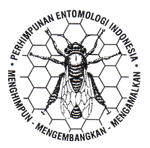Stingless bee foraging behavior and pollen resource use in oil palm and rubber plantations in Sumatra
DOI:
https://doi.org/10.5994/jei.18.2.81Keywords:
Asteracae, bee pollen, land transformation, Lepidotrigona terminata, Sundatrigona mooreiAbstract
Land transformation in the tropical rainforests to monoculture plantations leads to biodiversity loss and abiotic change. In the oil palm and rubber plantations of Sumatra, we explored the foraging behavior of stingless bees Lepidotrigona terminata, Sundatrigona moorei, and Tetragonula drescheri. Pollen was collected from bees returning to the nest to investigate the floral resources collected by bees inside and outside research plots from both types of plantations. Foraging behavior in both plantations showed an increase in the number of individuals returning to the nest with pollen as the morning progressed, followed by a gradual decrease in the afternoon. The foraging behavior of each stingless bee species was influenced by different environmental factors. While the activity of S. moorei was positively correlated with humidity, the activity of L. terminate was negatively correlated with temperature. We found that a single pollen load was dominated by a single plant taxon in all bee species in both plantations. All pollen collected in the rubber plantation was from Hevea brasiliensis, suggests that rubber is a potential pollen resource. However, in the oil palm plantation, Asteraceae pollen was the dominant taxon collected by both L. terminata and S. moorei. The comparison to the plant inventories in the plots suggests that almost half of the pollen collected by these two species in the oil palm hives was from outside the plantations, probably in forested patches and surrounding gardens. Finally, based on multivariate analyses, we found no competition for these floral resources between L. terminata and S. moorei.
Downloads
Downloads
Published
How to Cite
Issue
Section
License
Copyright (c) 2021 Rosi Fitri Ramadani, Rika Raffiudin, Nunik Sri Ariyanti, Siria Biagioni, Erin Treanore, Hermann Behling

This work is licensed under a Creative Commons Attribution 4.0 International License.
Authors who publish with this journal agree to the following terms:
- Authors retain copyright and grant the journal right of first publication with the work simultaneously licensed under a Creative Commons Attribution 4.0 International License that allows others to share the work with an acknowledgement of the work's authorship and initial publication in this journal.
- Authors are able to enter into separate, additional contractual arrangements for the non-exclusive distribution of the journal's published version of the work (e.g., post it to an institutional repository or publish it in a book), with an acknowledgement of its initial publication in this journal.
- Authors are permitted and encouraged to post their work online (e.g., in institutional repositories or on their website) prior to and during the submission process, as it can lead to productive exchanges, as well as earlier and greater citation of published work (See The Effect of Open Access).








